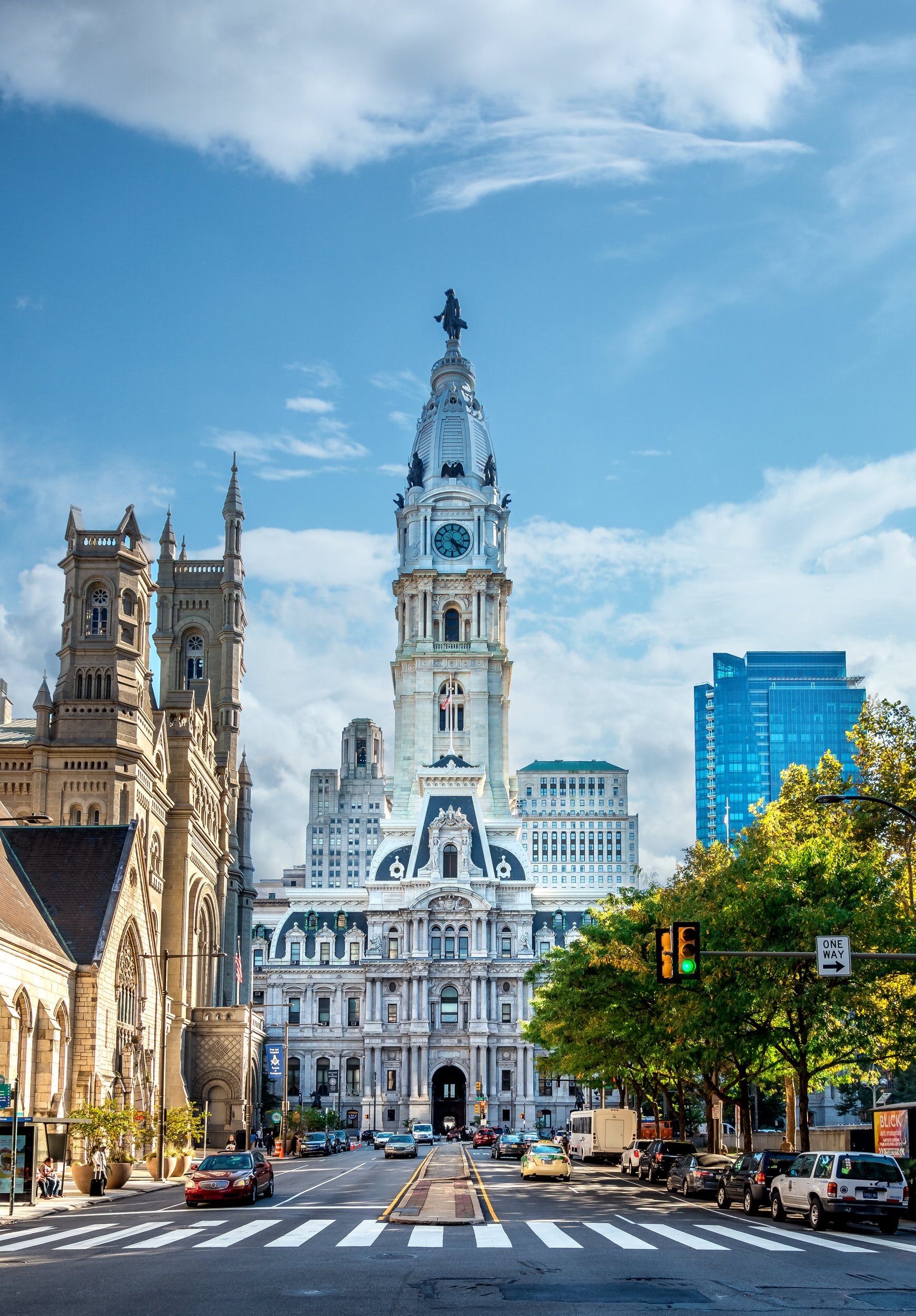A Triple Philly Treat
3 historic buildings — 3 very different styles
– all within 300 steps of each other
Most Americans know Philadelphia is chock-full of historic Colonial buildings, like Independence Hall, Carpenters’ Hall and Christ Church.
But few realize Philadelphia is home to three neighboring architectural masterpieces as eclectic and extraordinary as you’ll find anywhere in the world.
These gems — all U.S. National Historic Landmarks — are:
Philadelphia’s City Hall
The Masonic Temple of Philadelphia
The Pennsylvania Academy of the Fine Arts
Begun within about three years of each other, the buildings are radically different in look and style and sit within 300 steps of each other on N. Broad Street.
I first noticed this unique cluster of classics while writing a story on the Masonic Temple of Philadelphia. That story became part of my new book published by Temple University Press called “Real Philly History, Real Fast.”
As a certified member of the Association of Philadelphia Tour Guides and a freelance writer, I had already published columns on its neighbors, City Hall and the Pennsylvania Academy of the Fine Arts in the “Society Hill Reporter.”
Then I realized this was a triple-Philly treat hidden in plain sight. I don’t know of any city anywhere with three such amazing buildings so close together. By my count, these unique tourist attractions are just 287 steps apart.
Here’s a quick rundown on each:
Philadelphia’s City Hall, with the Masonic Temple close by on its left.
Philadelphia’s City Hall
Broad and Market Streets
Claim to Fame: Built in French Second Empire style at a cost of $24.5 million over a 30-year period, City Hall is the largest all-masonry load-bearing building in the world. It has no steel frame. With a floor space of 630,000 square feet, it’s said to be larger than the U.S. Capitol Building and may be the largest municipal building anywhere. Some walls are 22 feet thick. Until 1987 no building in the city could rise higher than City Hall’s 548 feet. Architect: John McArthur Jr.
What to see: Over 700 rooms; 250 sculptures by Alexander Milne Calder, including: William Penn, a 37-foot-high, 27-ton statue thought to be the largest atop a building in the world; and a clock face visible for miles that’s 3 feet larger in diameter than London’s Big Ben.
Phone: 267–514–4757
Masonic Temple of Philadelphia, PA. Photo by ProfReader.
Philadelphia’s Masonic Temple
1 N. Broad Street
What to see: A “robust Norman-style” exterior that becomes “a fantasy of Renaissance-inspired neoclassicism in the corridors and stairs and nineteenth-century ‘eclectic revivalism’ in the lodge rooms.” That’s how a coffee-table book published by the Masonic Temple described the building in 2013. Visiting the seven magnificent lodge rooms — all decorated ornately in different styles — is like taking a mini-trip around the world in under an hour. You’ll see Egyptian, Grecian, Gothic, Corinthian architecture and more.
Claim to Fame: The lavish interior took 15 years to complete. Architect: John Windrim. Interior designer: George Herzog.
Website: pagrandlodge.org.
Phone: 215–988–1917
Pennsylvania Academy of the Fine Arts building. Photo by Difference engine.
The Pennsylvania Academy of the Fine Arts (PAFA)
118 N. Broad Street.
What to see: A façade that is a spectacular amalgam of Renaissance, Gothic and Second Empire styles. The exterior is described by John Andrew Gallery in Philadelphia Architecture as “a riot of forms” executed in “rusticated brownstone, dressed sandstone, polished pink granite, red pressed brick and purplish terra-cotta.” Inside, you’ll find “an explosion of color,” and remarkable works by such artists as Gilbert Stuart, Charles Willson Peale, Thomas Eakins and Violet Oakley.
Claim to Fame: PAFA is the oldest art school and museum in the U.S. Designed by famed Philadelphia architect Frank Furness (pronounced “furnace”) and George Hewitt, PAFA’s magnificent Historic Landmark Building includes features later used in virtually every modern skyscraper, plus a passive ventilation system and industrial touches not seen in any other museum.
Plan a visit to at least one of these marvels, then come back to see the other two. You won’t be disappointed.


